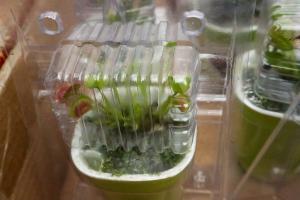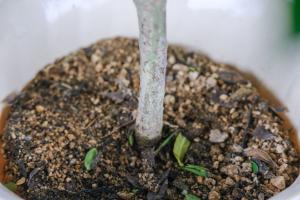How to Prepare Potted Plants to Bring Indoors
As the temperatures start to drop and summer comes to a close, it's time to start thinking about bringing your outdoor plants indoors for the winter. This transition can be challenging for many plants, but with the right preparation, you can help them thrive during the colder months. Here are some tips for preparing potted plants to bring indoors:
Clean Your Plants and Pots
The first step in preparing your plants for their move indoors is to give them a good cleaning. This will help remove any pests or debris that may be lurking on their leaves or in the soil. Use a soft brush to gently remove any dust or dirt from the leaves, and wipe down the pots with a damp cloth. If you notice any pests, treat them with an appropriate insecticidal soap or spray.
Prune Your Plants
Before you bring your plants indoors, it's a good idea to prune them. This will help encourage new growth and prevent them from becoming too leggy. Use clean, sharp shears to trim away any dead or damaged leaves, stems, or branches. You can also shape the plants to keep them looking tidy and compact.
Adjust Your Plants to Indoor Conditions
When you bring your plants indoors, they will be exposed to a different environment than they're used to. To help them adjust, gradually introduce them to indoor conditions over the course of a few days. Start by bringing them indoors for a few hours each day, and gradually increase the amount of time they spend indoors. This will allow them to acclimate to the lower light levels and drier air.
Repot If Necessary
If your plants have outgrown their pots or the soil has become depleted, it may be time to repot them. Choose a pot that is slightly larger than the current one, and use fresh, high-quality potting soil. Be sure to water thoroughly after repotting, and avoid fertilizing for the first few weeks to give the roots time to settle in.
Provide Adequate Light and Water
Keeping your plants healthy indoors requires adequate light and water. Be sure to place them in a brightly lit area, preferably near a window that receives plenty of sunlight. If your home doesn't have enough natural light, consider supplementing with artificial grow lights. Water your plants thoroughly when the soil feels dry to the touch, but be careful not to overwater, as this can lead to root rot.
Conclusion
Bringing your outdoor plants indoors for the winter can be a bit of a challenge, but with the right preparation, it can be a rewarding experience. By cleaning your plants and pots, pruning, adjusting to indoor conditions, repotting if necessary, and providing adequate light and water, you can help your plants thrive during the colder months. With a little care and attention, your indoor garden can be just as stunning as your outdoor one.

 how many times do yo...
how many times do yo... how many planted tre...
how many planted tre... how many pine trees ...
how many pine trees ... how many pecan trees...
how many pecan trees... how many plants comp...
how many plants comp... how many plants can ...
how many plants can ... how many plants and ...
how many plants and ... how many pepper plan...
how many pepper plan...






























